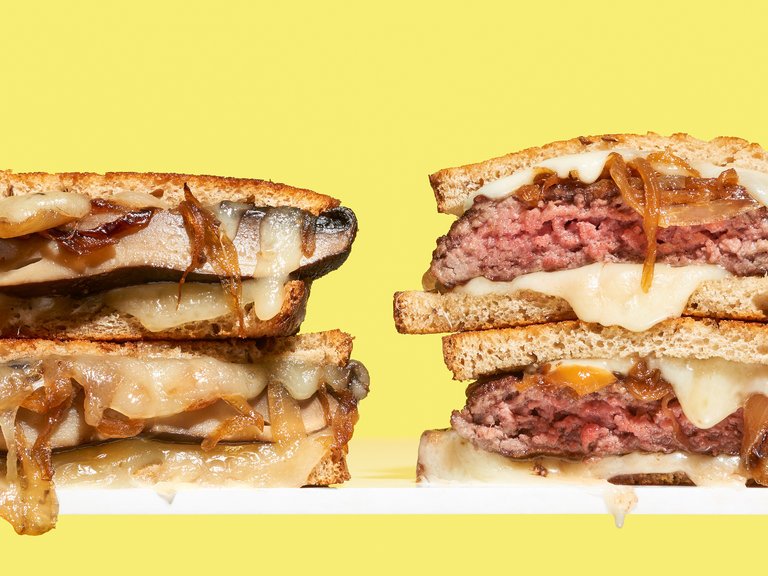 As great dinner sandwiches go, it is hard to beat the patty melt: ground beef, Swiss cheese and caramelized onions griddled on rye bread until they become a crisp, oozing package of salty-sweet delight. “They are one of the truly great underappreciated sandwich creations of all time,” said Ed Levine, founder of the Serious Eats website, where he maintains a list of his five favorite versions from across the country. “No one thinks about them,” he said. “They haven’t gotten their due!”One place where they have is in the family of the Los Angeles restaurateur Tiny Naylor, whom many call the patty melt’s originator. In the 1950s, Naylor put a patty melt on the menu of Tiny Naylor’s, his cool modernist drive-in on Sunset and La Brea, a sandwich to answer the design of the restaurant. (Look at the curve of that toast!) Naylor’s granddaughter, Jennifer Naylor, said she remembers eating patty melts with milkshakes at the restaurant as a kid. She later included them on the menu at Wolfgang Puck’s Granita, in Malibu, when she was the executive chef there in the late 1990s. Her father, Biff, put one on the menu of the restaurant chain Du-par’s when he bought it in 2004. He called the sandwich Tiny’s Classic.When I caught up with Jennifer Naylor, she was actually cooking patty melts, as part of a tasting menu for a catering client who wanted to try them for a late-night wedding-party snack. “Fresh-ground prime chuck, Gruyère and caramelized onions on rye grilled with butter,” she said. “I believe that’s pretty close to the original recipe my grandpa served back in the day.”
As great dinner sandwiches go, it is hard to beat the patty melt: ground beef, Swiss cheese and caramelized onions griddled on rye bread until they become a crisp, oozing package of salty-sweet delight. “They are one of the truly great underappreciated sandwich creations of all time,” said Ed Levine, founder of the Serious Eats website, where he maintains a list of his five favorite versions from across the country. “No one thinks about them,” he said. “They haven’t gotten their due!”One place where they have is in the family of the Los Angeles restaurateur Tiny Naylor, whom many call the patty melt’s originator. In the 1950s, Naylor put a patty melt on the menu of Tiny Naylor’s, his cool modernist drive-in on Sunset and La Brea, a sandwich to answer the design of the restaurant. (Look at the curve of that toast!) Naylor’s granddaughter, Jennifer Naylor, said she remembers eating patty melts with milkshakes at the restaurant as a kid. She later included them on the menu at Wolfgang Puck’s Granita, in Malibu, when she was the executive chef there in the late 1990s. Her father, Biff, put one on the menu of the restaurant chain Du-par’s when he bought it in 2004. He called the sandwich Tiny’s Classic.When I caught up with Jennifer Naylor, she was actually cooking patty melts, as part of a tasting menu for a catering client who wanted to try them for a late-night wedding-party snack. “Fresh-ground prime chuck, Gruyère and caramelized onions on rye grilled with butter,” she said. “I believe that’s pretty close to the original recipe my grandpa served back in the day.”
‘No one thinks about them. They haven’t gotten their due!’
It is also pretty close to the one Joe Carroll serves for lunch at St. Anselm restaurant in Williamsburg, Brooklyn, and to the one that Bill Telepan used to serve at his restaurant on the Upper West Side until it closed in May. Patty melts abound in these United States. You can find them in fast-food restaurants like Steak ’n Shake and Friendly’s, and further up the chain of excellence in restaurants like the Little Goat in Chicago, where Stephanie Izard serves patty melts with American cheese and pickles, and at Pork Slope in Brooklyn, where Dale Talde makes them with (of course) pork.But you don’t need to go to a restaurant, as long as you learn the basics. Making patty melts at home is an incredible gift — an object lesson in cooking simply and paying attention along the way. The work takes time. You need to caramelize the onions, but you can do so the morning before you cook, or the night before. Just reheat them before you make the sandwiches. You ought to cook the burgers in a shape that is slightly longer than round, so that it accepts the shape of the rye more pleasingly. (You should cook them until they are a little less done than you generally like to eat them, since they will continue cooking once you get them in the sandwich.) And you need to crisp the bread and melt the cheese with care, so that all the elements can come together in your buttery pan or on your griddle as if it were a form of magic or art. That is true, as it happens, even if you don’t cook meat. As an experiment, I once marinated portobello-mushroom caps in olive oil, balsamic vinegar, soy sauce and a spray of chopped garlic, then roasted them into submission in a hot oven, before using them in an otherwise-traditional patty melt in the Tiny Naylor vein. It is now a mainstay of my patty-melting, an outstanding vegetarian take on a dish with decidedly beefy origins.On which subject, a final note. A patty melt is not a hamburger. George Motz, author of “Hamburger America” and one of the nation’s foremost hamburger authorities, said so definitively when I reached out to him to discuss it. “It’s definitely in the burger family,” he allowed, “but due to the lack of hamburger bun, it is a sandwich for sure. So close, yet so far.”